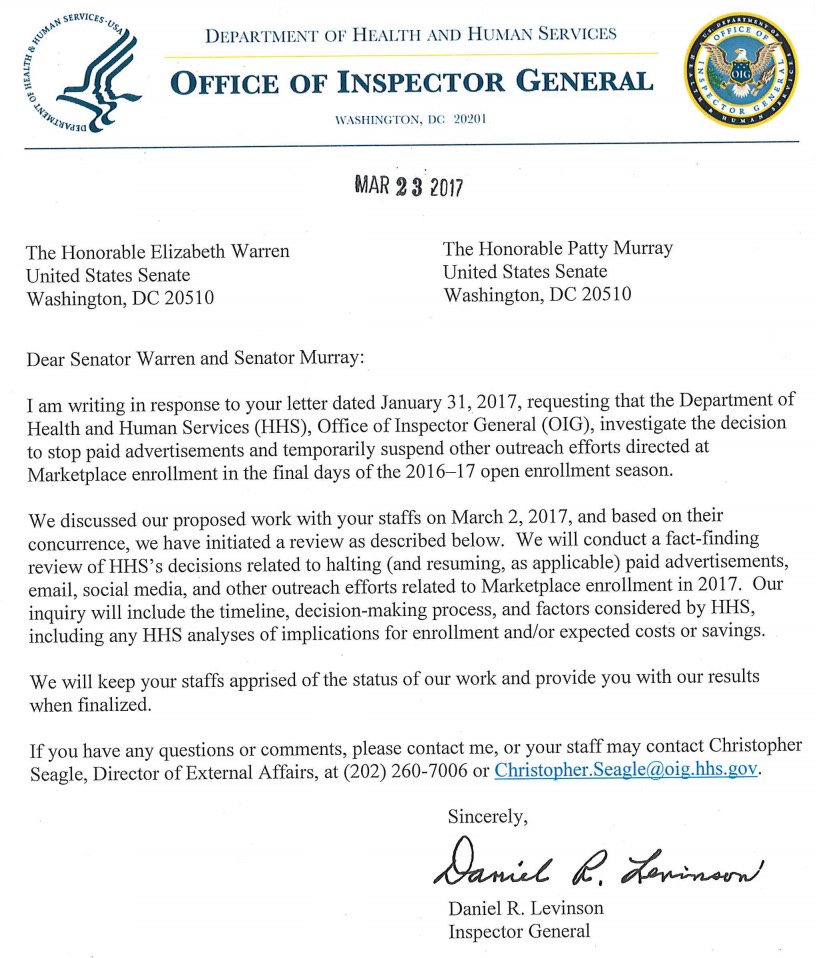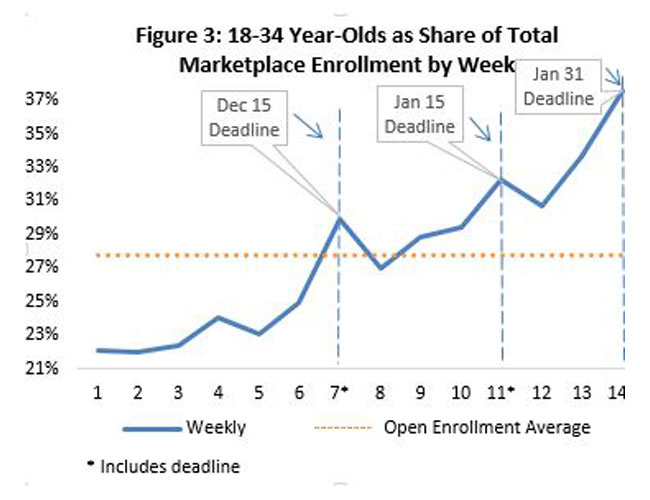Well, well, well. Who'da thunkit?
The Trump administration has pulled the plug on all Obamacare outreach and advertising in the crucial final days of the 2017 enrollment season, according to sources at Health and Human Services and on Capitol Hill.
Even ads that had already been placed and paid for have been pulled, the sources told POLITICO.
...Individuals may still sign up for Obamacare plans until the Jan. 31 deadline — but the Trump administration isn't advertising that fact any longer.
It is also halting all media outreach designed to spur signups in the days leading up to the deadline. Emails are no longer being sent out to individuals who visited HealthCare.gov, the enrollment website, to encourage them to finish signing up. Those emails had proven highly successful in getting stragglers to complete enrollment before the deadline.
Ron Pollack, executive director of Families USA, a consumer group that supports the law, called the decision "a mean-spirited effort that can only result in fewer people getting coverage who need it."
...The last five days of the open enrollment season are seen as critical because many individuals procrastinate and then join a last-minute sign-up surge. That’s particularly true for younger and healthier customers who are crucial to making insurance markets work.
...The decision to scrap Obamacare outreach and advertising came directly from the White House, according to sources.
...seeing how vitally important the last-minute advertising/outreach/reminder blitz is to getting that final surge over the final few days, the Trump administration pulling the plug on the ads (some of which were already paid for, I should reiterate) will likely result in several hundred thousand people who otherwise would have enrolled by the deadline not doing so. Worse yet, as noted in the article, the final surge enrollees tend to be younger/healthier folks, which means that the exchange risk pool (which isn't great to begin with) will likely be dealt a crippling blow.
The good news is that they were only partially successful in their efforts: After a massive backlash, they supposedly decided to keep some of the outreach/marketing in place (automated email reminders and some of the TV ads), although it's more likely that these were already locked in anyway and couldn't be pulled so close to the finish line. The bad news is that they were still able to kill off millions of dollars worth of advertisements anyway.
As a result, I downgraded my final projection to a wide range: As low as 12.4 million, as high as perhaps 13.0 million nationally...with anywhere from 9.5 - 10.0 million of that coming via the federal exchange.
Well, it looks like even that was optimistic. CMS just released the final "snapshot" report, and it's not pretty:
Of course, it's impossible to prove that the Trump executive-order/ad-kill combo was the cause of the numbers petering out at the end of the enrollment period...but I have some pretty strong evidence that it did.
How? Well, remember, the 12 state-based exchanges, which cover around 1/4 of all Qualified Health Plan (QHP) selections nationally, were not hurt by the ads being killed. The executive order might have had some impact, but the actual HC.gov ads being yanked shouldn't have hurt them much since these exchanges have their own, separate branding, marketing budgets and outreach programs.
I therefore decided to compare how the 39 HC.gov states performed relative to the 12 state exchanges...the results are pretty telling.
...UPDATE 3/16/17: I've updated the tables and chart below with the final, official 2017 Open Enrollment Period numbers from CMS.
Once again: The 39 states which operate off of the federal exhange (HealthCare.Gov), which is where the last-minute ads were pulled, saw a drop in enrollment of either 4.7% or 5.3% year over year, depending on whether you include Louisiana or not (special case, since they also expanded Medicaid in the middle of 2016, which cannibalized many exchange enrollees anyway).
Meanwhile, the 12 states which ran their own exchange advertising/outreach efforts and which didn't kill ads/marketing in the final 5 days saw an overall increase in enrollment of 1.8% if you don't include the BHP program in NY/MN, or 10.6% if you do.
3.3 million enrollees are 18-34 years old, or 27% of the total. This is down slightly from the 28% of Young Invincibles that we've seen in past years, likely due to the Trump Administration's last-minute Ad-Kill stunt in the final 5 days of Open Enrollment.
Assuming enrollment had hit, say, 13.0 million (784,000 higher), around 290,000 of those additional enrollees would likely have been 18-34 (37% of the final surge), bringing the grand total up to around 3.6 million...or 28% out of 13 million. In other words, the same 28% as prior years.
The Volume Of TV Advertisements During The ACA’s First Enrollment Period Was Associated With Increased Insurance Coverage
The launch of the Affordable Care Act was accompanied by major insurance information campaigns by government, nonprofit, political, news media, and private-sector organizations, but it is not clear to what extent these efforts were associated with insurance gains. Using county-level data from the Census Bureau’s American Community Survey and broadcast television airings data from the Wesleyan Media Project, we examined the relationship between insurance advertisements and county-level health insurance changes between 2013 and 2014, adjusting for other media and county- and state-level characteristics. We found that counties exposed to higher volumes of local insurance advertisements during the first open enrollment period experienced larger reductions in their uninsurance rates than other counties. State-sponsored advertisements had the strongest relationship with declines in uninsurance, and this relationship was driven by increases in Medicaid enrollment. These results support the importance of strategic investment in advertising to increase uptake of health insurance but suggest that not all types of advertisements will have the same effect on the public.
...These results have implications beyond the initial implementation period of the ACA. The future of the ACA is uncertain as of spring 2017, and proposals by Congress to repeal and replace the ACA are under discussion. Any health insurance system—particularly a system with a strong private-sector role, as articulated in Republican plans—will rely on marketing to attract new consumers. Indeed, this study demonstrates an important finding for health communication and health policy more generally: Consumers are responsive to persuasive health communication messages about health insurance, but the type of advertisement might matter.
HHS Dept. Office of the Inspector General, March 23rd:






